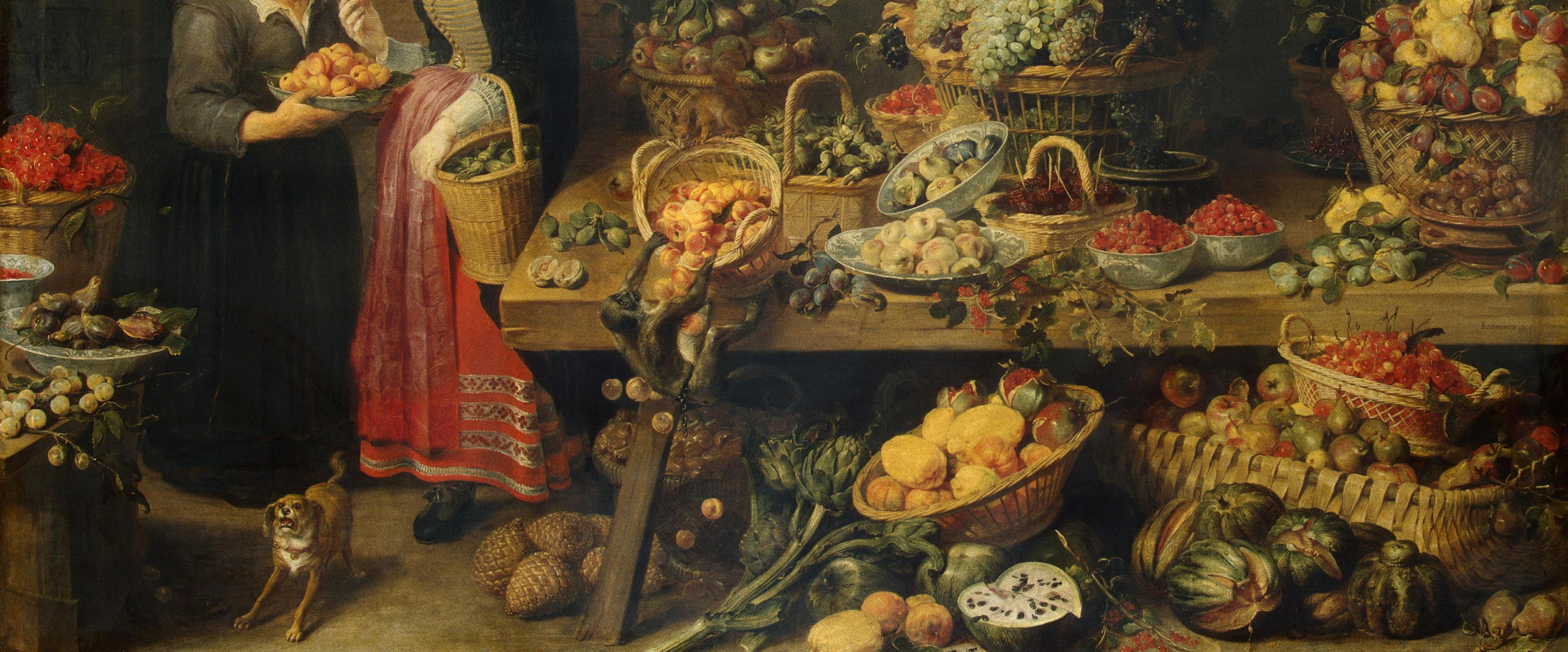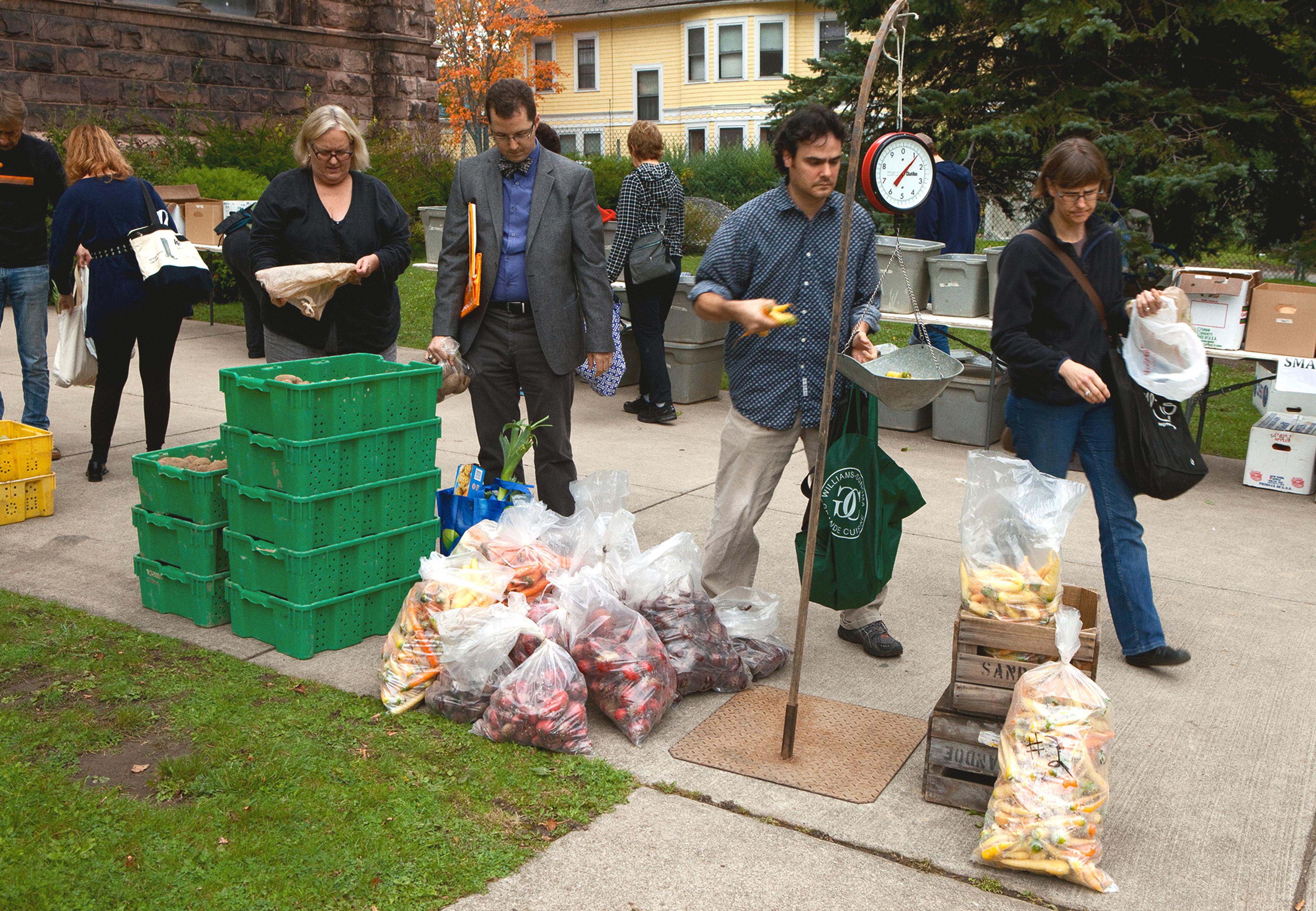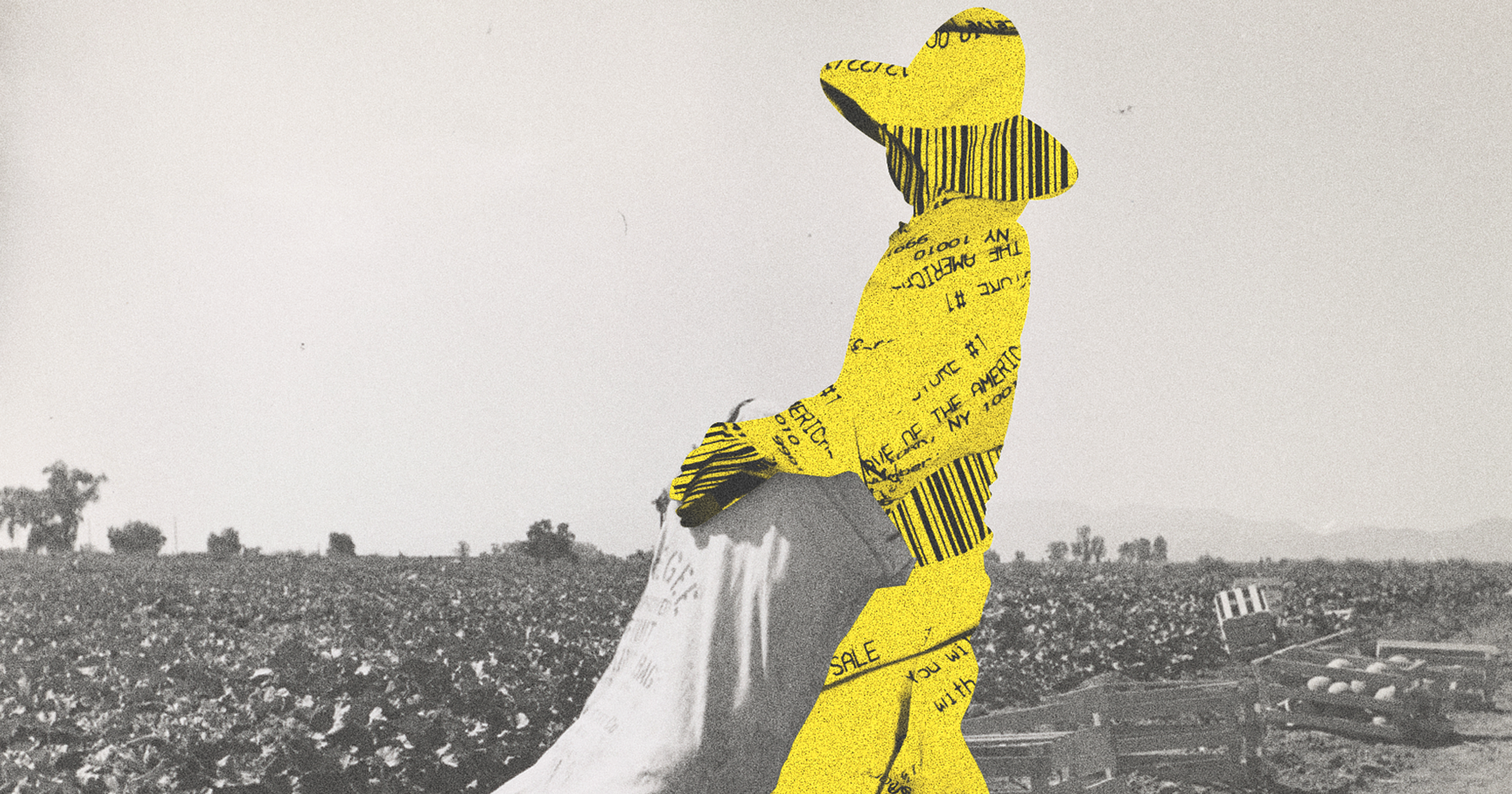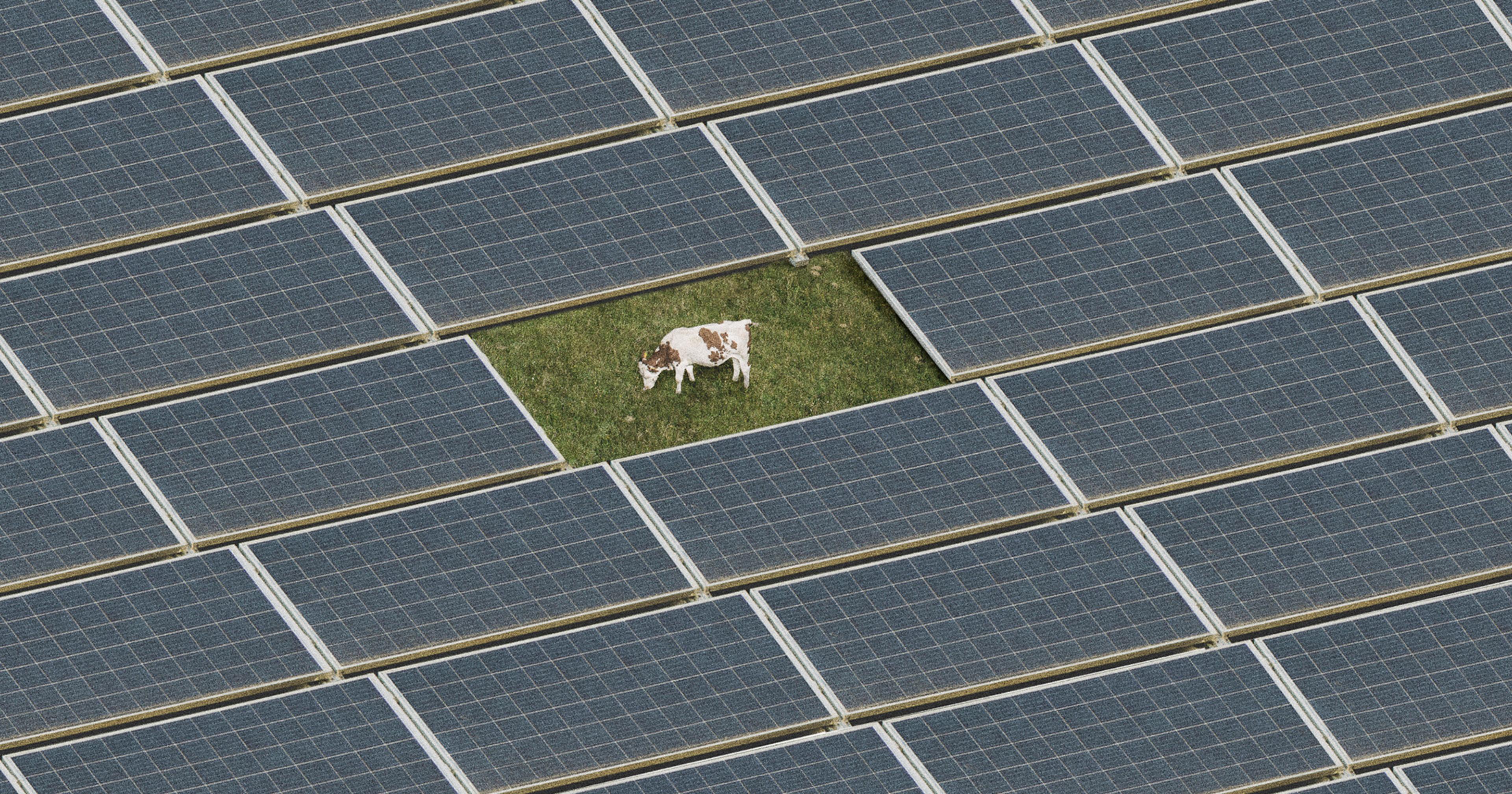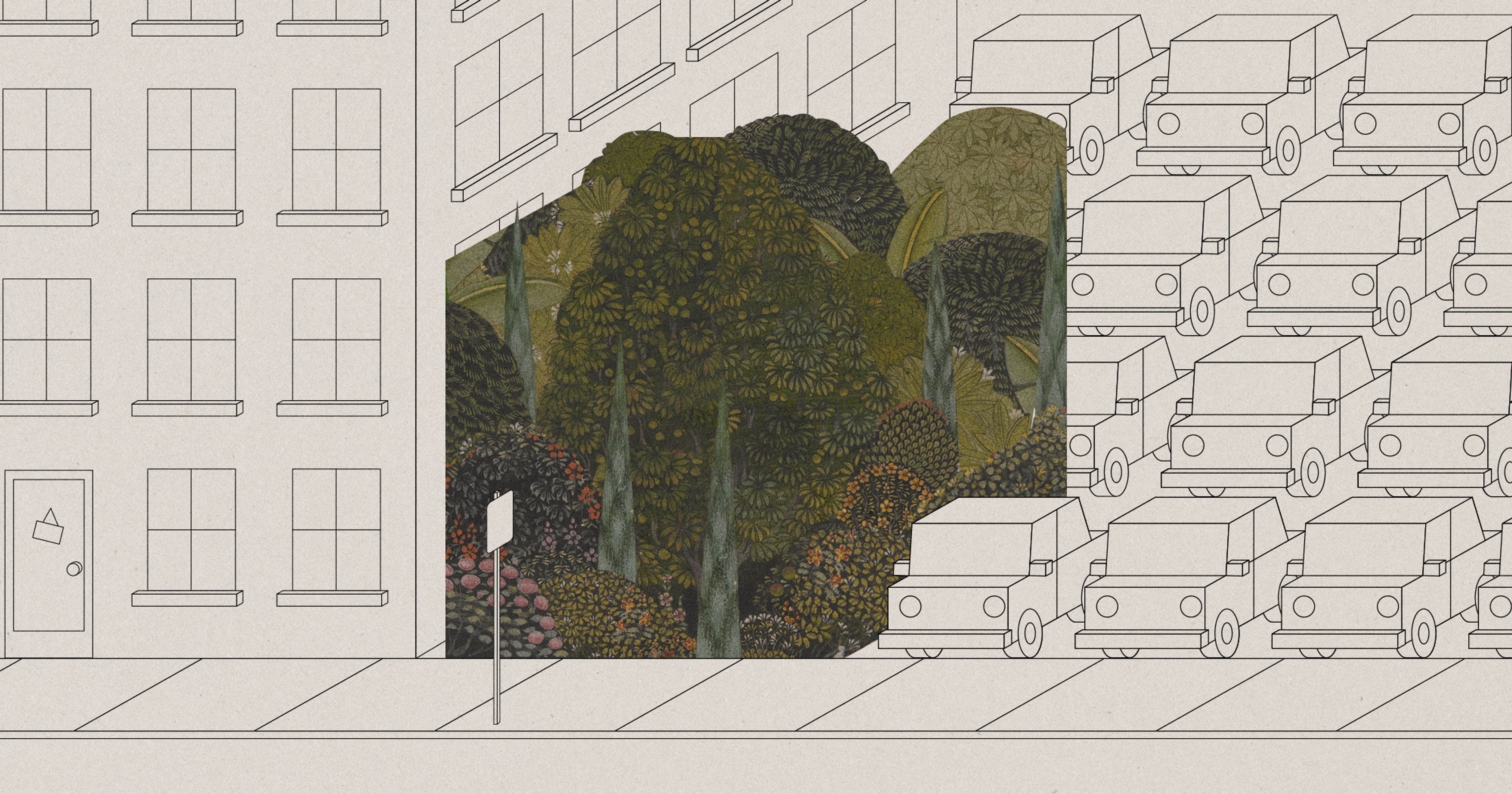In 2024, an Offrange article suggested the traditional model for Community Supported Agriculture may be on its last legs. One CSA manager begs to differ.
For over a year now, I’ve been mulling over Lauren David’s thought-provoking article on whether we’ve outgrown the CSA model. I have to admit she made some excellent points, especially about the appeal of models that offer more choice to consumers than traditional CSAs and, often, a discount over farmer’s market and supermarket prices. But the traditional CSA model has features I would hate to give up, especially in the urban environment where my own program operates.
I run the volunteer core group of the Clinton Hill CSA, which has served residents of three neighborhoods in Brooklyn, New York, since 2002. This past year, our 230 members included owners of multi-million-dollar brownstones as well as those who qualify for SNAP benefits. We offer sliding-scale pricing, where members pay more or less depending on their income.
Our farmer, Ted Blomgren of Windflower Farm, has been with us from the start; he supplies nine CSAs in NYC as well as a 10th CSA based on his farm, four hours north of the city. He works with core groups of volunteers at all of his New York City CSAs, since it would be impossible for him to run his farm while recruiting members, supervising the weekly distribution, and maintaining the deep neighborhood ties that allow these urban CSAs to thrive. The 10 volunteers in our core group handle recruitment and payments; monitor our website, databases, and social media; produce a weekly newsletter; and run our weekly distribution.
Let me take you through a year in the life of our traditional CSA, operated with a core group of volunteers. I believe the value it provides should be clear.
Mid-February
Most of the core group are sitting around Sarah’s kitchen table, eating brownies. Farmer Ted has just sent the season’s pricing, and I’ve been working out the master equation that lets us subsidize SNAP-eligible members while not overburdening those who pay more. If we get it wrong, we might have to reimburse the farmer from our own funds.
This year, our farmer has raised prices by 2.2%, and we’ve allocated the increase proportionally to our three membership tiers. Our highest-income members pay what works out to $35 per weekly pickup. Members at the middle-income tier pay $21.36, and our SNAP-eligible members pay $9.36. As with most CSA models, members pay up front in the spring, when the farmer needs the cash. Without retailers and wholesalers, the cost of the CSA is quite a bit less than one would pay for comparable produce at the farmer’s market or the local supermarket.
In addition to certified organic vegetables, Ted offers fruit, egg, maple, and grain shares, some of which he sources from other local growers. This spring, egg prices are sky-high, so we know the egg share will be extra popular.
At least 60 CSAs in New York City operate with a core model like ours. Since most of our farmers are at least two hours outside the city and can’t staff the weekly distribution, the core group of volunteers partners with the farmer to run the CSA. Freed from having to recruit members, find a site, supervise distribution, and handle most payments, the farmer can devote more time to growing the produce. In return for a substantial commitment of time (typically 30-50 hours over the season and sometimes many more), core members usually receive a free or reduced-price vegetable share.
Beyond the fact that our farmers simply can’t supervise distribution in the city, what are the advantages of a core group? With deep knowledge of our neighborhoods, we can reach out to various networks and put together a membership that’s diverse in so many ways. Most of our core, all of whom work for a living, also volunteer with other groups: a mutual aid society that sprang to life during the COVID pandemic, community gardens, an organization that keeps street trees healthy, the neighborhood food co-op. I’m on the advisory board of Just Food, a nonprofit that works for food justice and loosely oversees community supported agriculture in New York City.
April
I walk over to our distribution site to meet Nadia, a social worker at the nonprofit that hosts our distribution. She wants me to speak about CSA programs to some of the formerly homeless people who live there. During the season, Nadia distributes some of our extra produce to them, and we’re curious if they might be interested in becoming members. Not this time — this group has been through a lot. They ask questions, but the prospect of membership might be too much of a commitment, and I know many of them are worried about their SNAP benefits. We’ll try again later.
Every fall we survey our members. In addition to questions about the quality and quantity of the produce, we ask everyone what they value most about the CSA. We have a lot of churn in the first few years of membership, as people move away or decide the CSA model isn’t for them. They may decide they prefer to eat out more or they just want to choose their own produce at the farmer’s market (our local farmer’s market hosts a spend-down CSA). But those members who stay for three years tend to be in it for the long haul, and in the annual surveys, many of them mention our community as particularly important.
Late May
Don’s been driving the farmer’s truck forever; he’s an artist who also drives a school bus to pay the bills. Our members start their volunteer shifts next week; today, those of us on the core greet Don and his helper, Daniel. We unload the truck, arrange the plastic bins on patio tables, put out sign-in sheets. This early in the season, the share is mostly greens, spring onions, potted basil. Members start trickling in.
Chad, one of our distribution managers, turns on a portable speaker and puts out a swap box for items members don’t want, which soon fills with chard. (Sigh. As a chard-lover, I’ll never understand this.). Herman, a retired school principal who may be our oldest member, arrives with a big smile. He’s one of a collection of people who’ve been there from the start: Roy, Jenny, Bianca, others. In our early days members signed up for volunteer shifts on a clipboard, and we took all of our payments by check. When the terrible blackout hit the Northeast in 2003 and we had to cancel distribution, we called our members on landlines.
Tonight, everything works beautifully; a few members Venmo outstanding payments after we check the online spreadsheet to verify what they owe. Our outreach coordinator, Chelsea, talks to new members, jiggling her newborn, while her 3-year-old zips around on a scooter. At the end of the evening, Pastor Valerie arrives with her grandson to take half the leftover produce, whatever doesn’t go to Nadia’s group, for her church’s soup kitchen.
The CSA wouldn’t retain as many members as we do if the weekly pick-ups weren’t enjoyable, if people didn’t feel they could linger, ask the hard questions about what to do with garlic scapes and kohlrabi, chat with neighbors, let their kids painstakingly count out and choose the carrots, and give their dog a drink from the water dish by the main entrance.
All of our members volunteer a few hours during the season, and our distribution managers work to make that a pleasant experience. And though Farmer Ted rarely makes it to the site himself, our members value their connection with him, in part because his “Letter From the Farm” is the centerpiece of our weekly newsletter. For our members, the CSA functions as a third place, separate from home and work, where the anonymous city falls away, and people feel recognized.
Until the pandemic, we struggled to find low-income members. We have always been able to sign up affluent food-lovers without trouble, but reaching SNAP-eligible neighborhood residents was a challenge. But in 2020, as job losses mounted and food insecurity became a new fact of life for many New Yorkers, our membership at the lowest income tier tripled. Since that time, it has continued to grow through dedicated outreach and word of mouth. The city can feel siloed, a place where people rarely interact outside of their established social groups, but every week, CSA members of all income levels might find themselves smiling at a toddler’s first taste of a strawberry or in serious discussion about how to cook an eggplant.
Competition for the food dollar in high-income urban neighborhoods is intense, with upscale farmers markets and various farm box and subscription models offering the convenience of home delivery and a la carte options — but not the personal ties to a farmer that come with a genuine CSA. On the other hand, a portfolio of sliding-scale CSAs in demographically mixed neighborhoods offers a stable model for our farmers. My own farmer makes his living entirely off his CSAs, all but one in the city.
In 2003, our second year, one of our members painted the banner that we hang on the fence outside. To finish it off, we asked all the kids who showed up one week to dip their hands in paint and put prints on the banner. The toddlers — including my son — whose handprints are on that banner are grown up and in the world. But now, in June, I’m pleased to see many new, young-adult members who look as if they could be my son’s age. Our farmer’s son, Nate, is working on the farm and probably will take it over at some point. We’re not running the CSA right unless we’re reaching out to new members, ensuring continuity.
June
The swap box is a reliable source of newsletter inspiration, and this week Veronica, our newsletter editor, has added recipes for chard. Our farmer’s letter starts exuberantly: “On Friday of last week, in one spectacular day, three of our staff planted ‘Panisse’ and ‘Tropicana’ lettuce, ‘Red Russian’ kale, ‘Giant of Italy’ parsley, and ‘Prospera’ basil, some 15,000 plants in all.” It would be uncharacteristic for a farmer (any farmer) not to throw in a word of caution, and he adds, “Weather, the fickle managing partner of our farm, has been particularly out of step with the plans I made for this season.” We shall see.
October
With torrential rains on the last night of the season, we’ve cancelled our annual potluck, though a plastic pumpkin filled with Halloween candy offers consolation. Juggling tote bags and dripping umbrellas, members pick up their shares and leave quickly. Climate change has made the year a challenging one for our farmer. With the government shutdown, we know many local people are worried about SNAP benefits, and our core group arranges to donate a large shipment of extra produce to our host group and a nearby food pantry. We hope some of those who benefit might try a subsidized CSA membership next year. We regularly hear from farmers who are new to the CSA model and eager to give it a try.
There’s no doubt the core model CSA is more work at the outset, and I suspect it’s not for those communities with affordable farmer’s markets or multiple produce stands in easy driving distance. But here in the city, our CSA offers value for farmers who are geographically removed from their customers, and it brings tangible benefits to high- and low-income urban residents who appreciate knowing where their produce comes from and enjoy the community that develops around the weekly distribution.
We certainly have other CSA models to choose from, including farm boxes and spend-down CSAs that operate out of farmer’s markets. But the core group model has proved durable here in the city; it’s worth growing and studying for the real benefits it offers, including — maybe especially — the “community” in “Community Supported Agriculture.”
